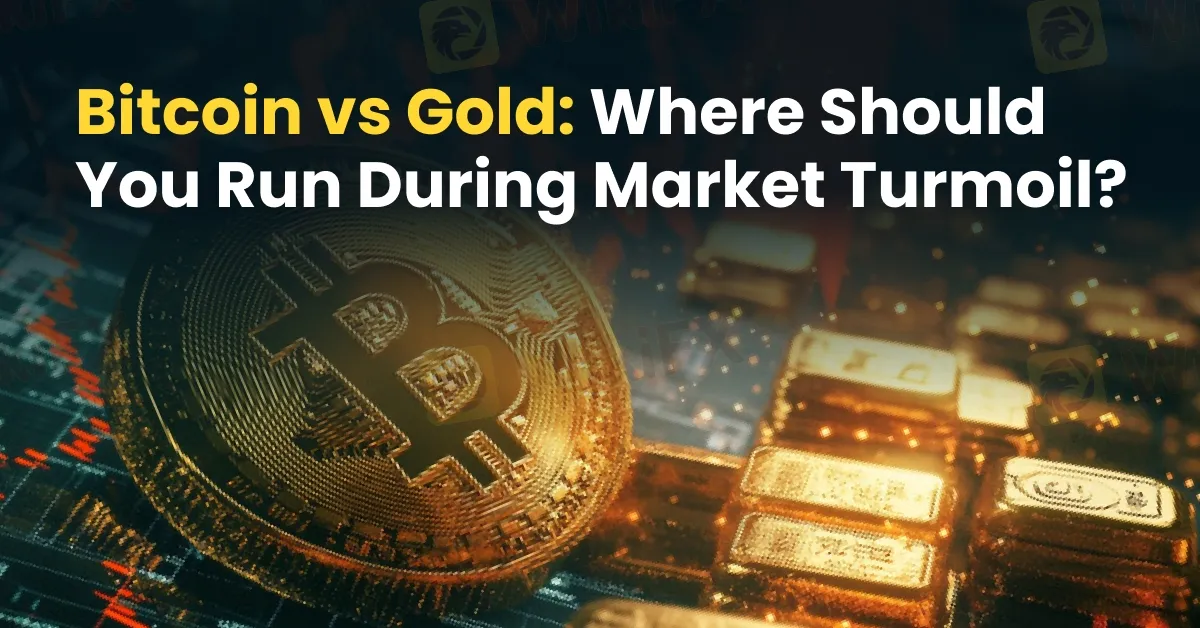Bitcoin vs Gold: Where Should You Run During Market Turmoil?
Abstract:As the Bitcoin recently surged from the $82,000 range to over $93,200 (its highest level in months), investors are again left to ponder: Could Bitcoin be the new gold?

For centuries, gold has held an almost mythical status as a safe haven asset, which is an enduring store of value when markets turn volatile and investor confidence wanes. But in the wake of a digital revolution, a new contender has emerged: Bitcoin. As the cryptocurrency recently surged from the $82,000 range to over $93,200 (its highest level in months), investors are again left to ponder: Could Bitcoin be the new gold?
Gold: The Traditional Bastion of Safety
Golds legacy is deeply ingrained in financial history. Revered for its scarcity, tangible nature, and universal recognition, gold is often viewed as a hedge against inflation, currency devaluation, and geopolitical turmoil. It has outlasted empires and economic cycles alike, remaining relatively stable even in times of crisis.
Moreover, gold benefits from a well-established market infrastructure. It is regulated, widely understood, and boasts high liquidity. Institutional and retail investors alike understand its function in a diversified portfolio.
Bitcoin: The Digital Challenger
Conversely, Bitcoin is a far younger asset, born from the 2008 financial crisis as a decentralised alternative to traditional currencies. Its proponents argue that Bitcoin, with its fixed supply of 21 million coins, shares golds scarcity attribute but offers modern advantages, such as borderless transferability and resistance to central bank manipulation.
Its recent price rally, crossing the $93,000 mark after months of consolidation, has reignited the debate. Advocates point to increasing institutional interest, adoption by payment platforms, and its use as a hedge against fiat debasement as key indicators that Bitcoin may be maturing into a safe haven asset.

Yet, volatility remains its Achilles heel. While gold typically exhibits slow and steady price movements, Bitcoin is known for its erratic swings, often influenced by sentiment, regulatory headlines, or macroeconomic data. Can an asset so prone to double-digit daily shifts truly be considered “safe”?
Different Generations, Different Preferences?
Generational preferences may also play a role. Millennials and Gen Z investors, more comfortable with digital technologies and decentralised finance, often lean towards Bitcoin. Older investors, with memories of golds performance in previous crises, may still favour the yellow metal.
Perhaps the real answer lies not in choosing one over the other, but in understanding their roles as complementary assets. Gold may continue to serve as a foundation of security, while Bitcoin evolves into a high-risk, high-reward counterpart, especially appealing in an era where digitalisation shapes every facet of our lives.
So, is Bitcoin the new gold? Or simply an exciting, yet volatile alternative? As markets evolve and investor behaviour shifts, the safe haven debate is far from settled. What is clear, however, is that both assets are now central to the modern portfolio discussion.

Read more

Gold Price Expected to Surge 20% by 2026, Says Bank of America
Discover how gold prices are expected to rise by 20% by 2026 amid weak dollar index and US fiscal deficit concerns, in this story.

Gold Rate Today in Mumbai and Other Updates on Your Fingertips
After correcting for two straight days, gold rebounded on June 26, 2025, across 24 Karat and 22 Karat categories in Mumbai, the financial capital of India. Check out the latest price update.

Gold Prices Continue to Fall as Israel, Iran Agree on Ceasefire
Gold prices fell across spot and futures markets in India the moment the Trump administration announced a ceasefire between Israel and Iran. Read more about the development.

Gold Prices Down in Early Hours of Spot Trading Today in India
Gold prices in India fell by as much as INR 820 per 10 grams of 24 Karat and INR 750 per 10 grams of 22 Karat in the early hours of spot trading. Check our gold price report for today.
WikiFX Broker
Latest News
eToro UK Launches 4% Stock Cashback Card: Earn Up to £1,500 Monthly
EBC Expands ETF CFD Offering & Copy Trading Education Partnership
Gold Prices Continue to Fall as Israel, Iran Agree on Ceasefire
China steps up push to internationalise the yuan as global dollar dominance wavers
ESMA Proposes Reporting Reforms That Could Cut Costs for Forex Brokers
Multibank Group Offices: Global Presence and Contact Info
Exposed: Telegram Forex Groups Are Scamming Millions! Not Safe!
Bumble jumps 26% as dating company plans to axe 30% of workforce
Drone maker AeroVironment shares pop 20% on earnings beat
Nvidia shares head for record close as Wall Street shrugs off China concerns
Rate Calc
